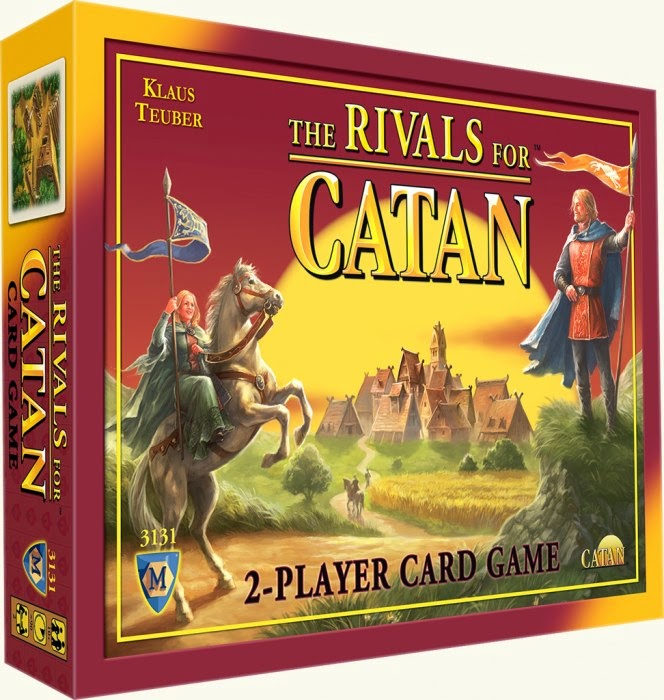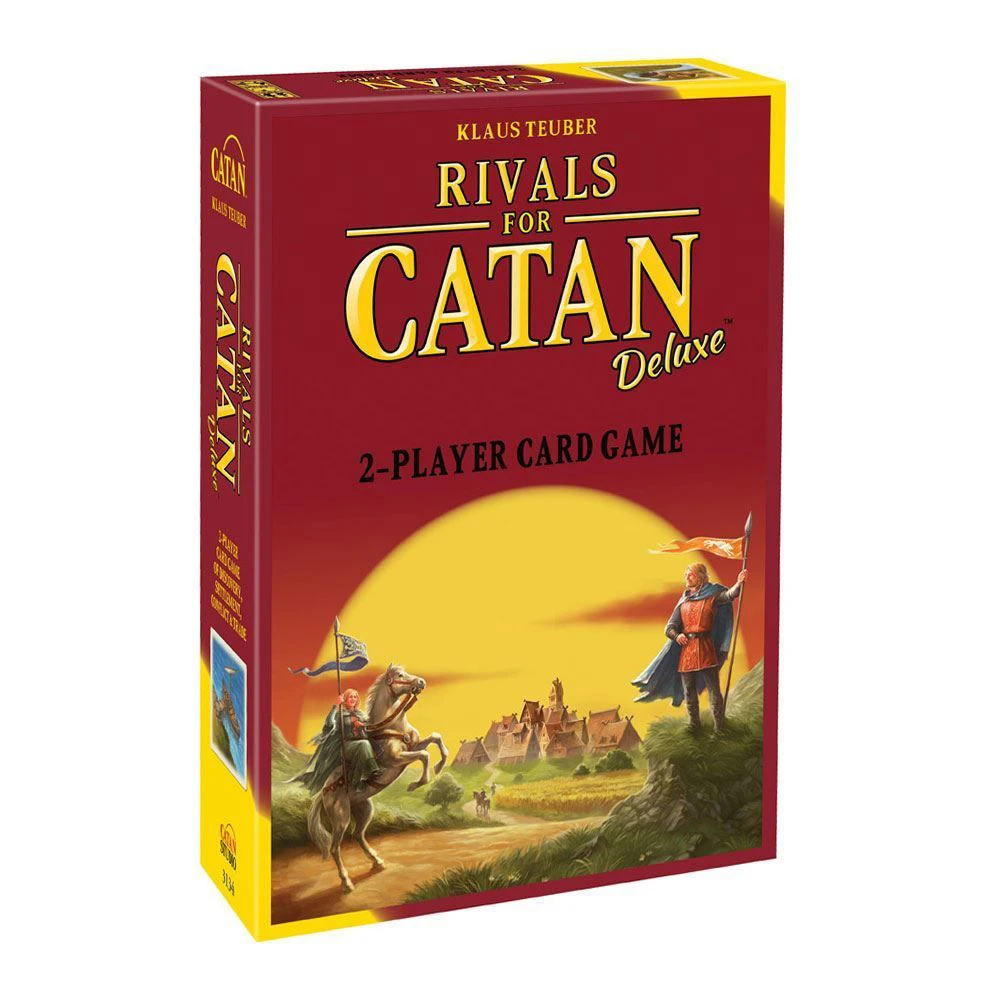

The Era of Intrigue: Determine Catan's spiritual balance! A Religious Dispute causes both players to lose cards. There will be blood.īlurb from the publisher: 'Compatible with all standard or Deuluxe editions of Rivals for Catan! We’ll address the other scenarios in a future article, but if you want to dive right in, go for it! You’ll also find that the two expansions to The Rivals for Catan, Age of Darkness and Age of Enlightenment, each contain three additional scenarios to play through with the new cards included in the expansions.Review Summary: Rivals for Catan dumps the multiplayer solitaire approach and goes interactive. As you master the introductory scenario, you’ll want to expand your games with additional cards and options included in the game.
RIVALS FOR CATAN HOW TO
By learning how to properly put these simple building blocks together, you’ll be ready for more advanced strategies before you know it.
RIVALS FOR CATAN UPGRADE
Don’t forget to upgrade your settlements into cities and to take advantage of production boosters.

You’ll find that there are many paths to victory in The Rivals for Catan. You’ll end each of your turns with three expansion cards, so you’ll need to manage your hand as you develop your short and long-term plans.

Each turn you may draw an expansion card from the top of a draw deck, or you can spend resources to search a deck for a specific card. Each settlement has space for two expansions. Expansions can be buildings, heroes, trade ships, and more. Instead, they allow you to build more expansions adjacent to the city.Īs you develop your principality, you can add expansions to your settlements and cities. However, in Rivals, cities do not increase your production. Just like in Catan, you’ll eventually replace your settlements with cities. When you build a new settlement, you gain access to two additional, resource-producing regions which you place at the corners of your new settlement. Each settlement must have exactly one road between them. You must build new settlements along your center row. By strategically leveraging your regions, you’ll be able to save enough to afford more and greater improvements.Įventually, you’ll want to expand beyond your initial settlements. You can store up to three resources in a region by rotating the region card. You don’t need to spend your resources immediately. On your turn, roll the production die and both players produce resources based on the die result and your own principality’s set up. Over the course of the game, you’ll produce resources and expand your principality, hoping to be the first player to score seven or more victory points. Nearby, you’ll set up draw decks for events, regions, roads, settlements, cities, and expansion cards. You will also have six numbered regions (lumber, wheat, sheep, brick, ore, and gold) placed diagonally adjacent to each settlement. You’ll begin by placing two settlement cards, connected by a road. You and your opponent each has a set of starting cards. Today, we want to introduce you to “The First Catanians,” an introductory scenario to get you started. The deluxe version of the game comes with useful card trays for organizing your game play, as well as highly-sought-after promotional cards no longer obtainable elsewhere. All of this improvement will expand your influence in an attempt to thwart your opponent’s efforts.īoth The Rivals for Catan and The Rivals for Catan: Deluxe come with three themed scenarios that introduce additional card sets and game mechanics. In addition to building settlements, roads, and cities, you can construct many life improving additions to your realm. In The Rivals for Catan, each player takes charge of their own principality, dictating the fate of its settlers. The Rivals for Catan is a two-player card game set in Catan.


 0 kommentar(er)
0 kommentar(er)
